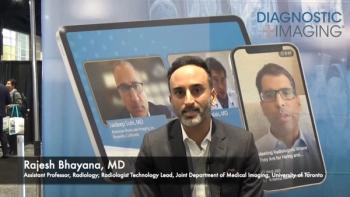
Mammography Screening Produces 41-Percent Drop in Risk of Breast Cancer Death
Study finds risk reduction attributed to screening efforts, not advanced therapies.
Annual mammography screening can reduce a woman’s risk of dying from breast cancer within 10 years of her diagnosis by 41 percent, according to new research published today.
According the results of the investigation, published in
To determine how effective mammography screening is in reducing the 10-year risk of death, researchers, led by Stephen Duffy, Ph.D., from Queen Mary University of London Center for Cancer Prevention and László Tabár, M.D., from the mammography department in the Falun Central Hospital in Sweden, examined mammography screenings from more than 500,000 women from nine countries – approximately 30 percent of population of women who were eligible for mammography screening. They compared their outcomes to women who were not screened.
Based on this evaluation, the researchers found that, not only did screened women die less often, but screenings also produced a 25-percent drop in the incidence of advanced breast cancer.
“Our evaluation of outcomes demonstrated that women who attended screening, and typically had their breast cancer diagnosed at an earlier stage, benefited substantially more from the state-of-the-art therapy existing at the time of diagnosis and over the period of our analysis compared with women who did not attend screening,” Duffy wrote.
What Makes This Study Different
Typically, observational studies focused on mammography, breast cancer diagnosis, and mortality, share the same methodological problem, the team explained. The mortality data apply to cancers identified and treated during previous years. During the time between the screening and the patient’s death, the specifics of their participation in any screenings or exposure to any therapies could vary significantly.
But, the method of this study, Duffy explained, eliminates that issue. His team adopted a different endpoint – the incidence of breast cancer becoming fatal within 10 and 20 years post-diagnosis. Making this change puts breast cancer treatments, mammography screenings, and breast cancer deaths into the same time period.
According to Duffy, this current study, which included 549,091 women from nine countries, extended previous research, which was conducted only with participants from Sweden, that also looked at breast cancer fatalities. That research determined that women who underwent screening had a 60-percent lower incidence of breast cancer fatality within the next decade than women who didn’t.
Study Results
Based on the gathered data, the team determined the incidence rates of 2,473 of breast cancers that were fatal within a decade of diagnosis, as well as the incidence rates for 9,737 advanced breast cancers. The researchers also accumulated details about breast cancer diagnosis, death date, and cause of death from national registries, and specifics about tumor characteristics were submitted by regional cancer centers, they said.
This analysis revealed a 41-percent reduction in cancer deaths within 10 years after diagnosis among women who received mammography screening. It also showed that the incidence of advanced breast cancer – invasive breast cancers that measure more than 20 mm and/or four or more metastatic axillary lymph nodes – dropped by 25 percent.
These results also showed, the researchers wrote, that mammography screening trials can produce results from data obtained from routine settings, making routine mammography screening a reproducible service for reducing breast cancer deaths.
“The benefits of participating in mammography screening are truly substantial and save lives through early detection,” the researchers wrote, “lives that otherwise would have been lost under the prevailing therapy at the time of diagnosis.”
Newsletter
Stay at the forefront of radiology with the Diagnostic Imaging newsletter, delivering the latest news, clinical insights, and imaging advancements for today’s radiologists.




























